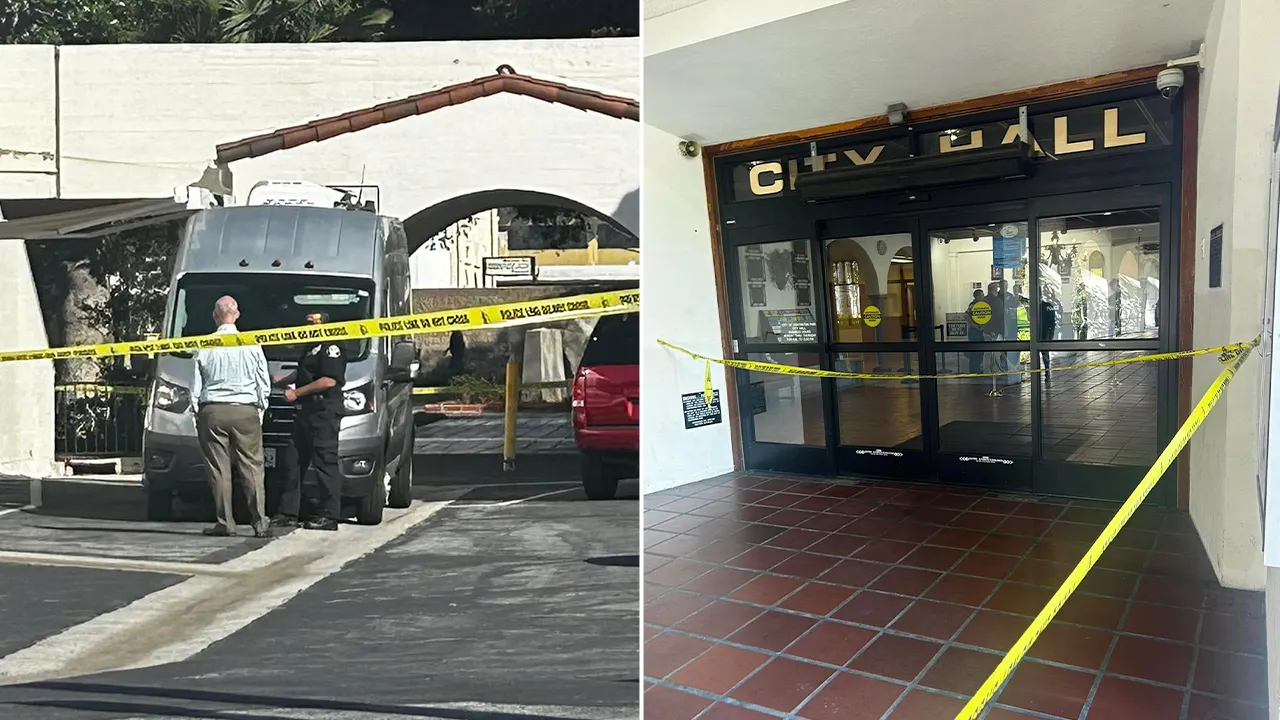Health
RFK Jr. Says He Won’t Keep Financial Stake in HPV Vaccine Lawsuits

During intense questioning Thursday by members of the Senate health committee about his plan to keep a financial stake in major vaccine litigation, Robert F. Kennedy Jr. said that he would give away his rights to fees that might flow from it.
It appears to be a reversal from the details of the government ethics agreement that he filed for his Senate confirmation hearings to become the nation’s health secretary.
Just last week, the ethics agreement he provided to senators stated that he would retain a stake in the continuing litigation, meaning that if confirmed, he could receive payments while overseeing the vast U.S. health bureaucracy that includes regulating drug companies. The financial disclosure specified that Mr. Kennedy would collect fees from Wisner Baum, a personal injury law firm based in Los Angeles.
Mr. Kennedy said that he had sent hundreds of clients to the firm, which is suing the drug maker Merck over claims that young people were injured by the company’s Gardasil vaccine, aimed at preventing cervical cancer caused by the human papillomavirus, or HPV. In the ethics statement, he reported: “I am entitled to 10 percent of fees awarded” in cases that he referred to Wisner Baum.
Lawmakers considering his confirmation on Wednesday and Thursday denounced the financial arrangement, with many Democrats suggesting that it posed an inherent conflict because he would stand to gain financially from decisions he made as health secretary that involved drug companies.
“I have given away all of my rights to any fees in that lawsuit,” Mr. Kennedy told senators on Thursday. Asked to elaborate, Katie Miller, a spokeswoman for Mr. Kennedy, said that he “isn’t personally retaining the fees.”
But she did not respond to additional questions as to whether the arrangement with the law firm to pay Mr. Kennedy a 10 percent contingency fee — depending on the outcome of any lawsuit settlement or verdict — would somehow be altered or revised to redirect any payment. It is possible it could be placed in a trust or limited liability company of some sort, or be directed to a family member. The funds could also be dispersed to other lawyers at the firm. (Conor Kennedy, Mr. Kennedy’s son, is a lawyer at Wisner Baum.)
The U.S. Office of Government Ethics, which tends to approve nominees’ agreements, and Wisner Baum did not respond immediately to questions on Thursday. The ethics office has reminded government nominees that they must clear substantive changes to their agreements.
On Wednesday, a widely circulated clip of Senator Elizabeth Warren, Democrat of Massachusetts, outlined the ways Mr. Kennedy could influence the lawsuits.
During her questioning, Mr. Kennedy would not commit to walking away from any proceeds of the Gardasil cases, saying he had complied with ethics rules.
“Kennedy can kill off access to vaccines and make millions of dollars while he does it,” Ms. Warren said. “Kids might die, but Robert Kennedy can keep cashing in.”
On Thursday, in the second hearing, Senator Patty Murray, a Democrat of Washington, picked up the thread, talking about how effective the HPV vaccine had been at preventing cervical cancer.
You have “said it actually increases the risk of cervical cancer. Do you stand by those statements?” Ms. Murray asked.
Mr. Kennedy did not answer directly, saying the matter was before a jury this week. Wisner Baum lawyers are representing a young plaintiff who claims she suffered from a blood circulation disorder after receiving the HPV vaccine in a trial that began this month in California.
Senator Tim Kaine, a Democrat of Virginia, continued the line of questioning on Thursday, citing a number of positive studies about Gardasil, which he said is made in Virginia. He asked about Mr. Kennedy’s decision to keep a stake in the litigation.
“How can folks who need to have confidence in federal vaccine programs trust you to be independent and science-based when you stand to gain significant funding if lawsuits against vaccine manufacturers are successful?” Mr. Kaine asked.
That was the first time that Mr. Kennedy publicly disclosed that he was giving up the fees.
Public records show that Mr. Kennedy has earned about $2.5 million from his work with Wisner Baum since 2022.
After Senator Warren’s pointed questions about potential conflicts involving Mr. Kennedy’s financial interests in cases against drug makers, Wisner Baum released a statement saying the $2.5 million in payments were related to Mr. Kennedy’s work on cases involving the weed killer Roundup and others related to wildfires. None of that amount, the firm said, was related to vaccine litigation.

Health
U.S. Canceled Work to Contain a Serious Ebola Outbreak

Hours after Elon Musk reassured Cabinet members on Wednesday that efforts to contain the Ebola outbreak in Uganda had only been “accidentally canceled very briefly,” the Trump administration terminated at least four of the five contracts for Ebola-related work in that country.
The four canceled contracts were a tiny fraction of the 10,000 contracts and grants at the United States Agency for International Development and the State Department that the Trump administration ended on Wednesday.
But they were important: Since January, Uganda has experienced a serious Ebola outbreak, from which the country is only just emerging. The contracts funded Ebola screening at airports and protective equipment for health workers, and helped prevent transmission by survivors of the disease, according to a former U.S.A.I.D. official.
Mr. Musk told cabinet members that the administration had “restored the Ebola prevention immediately, and there was no interruption.” But his statement was inaccurate, according to two former U.S.A.I.D. officials with knowledge of the situation in Uganda. (The officials asked to remain anonymous for fear of retaliation.)
In theory, waivers allowed for some work to continue on containing pathogens like Ebola, Marburg and mpox, as well as preparedness for bird flu. But very little money had actually been delivered.
Few organizations providing those services had the financial reserves to continue, and even fewer trusted that they would be reimbursed.
Their fears may have been justified. On Wednesday night, the Supreme Court’s chief justice, John G. Roberts Jr., ruled that U.S.A.I.D. and the State Department did not need to immediately pay for more than $1.5 billion for work that had been already completed.
The work underway without those payments was interrupted, contrary to Mr. Musk’s claim.
At the airport in Entebbe, Uganda, screening for Ebola was on pause for more than two weeks, according to a former U.S.A.I.D. official with knowledge of the situation. The organization doing it decided a few days ago to resume work with its own funds.
The group’s contract was terminated on Wednesday night.
The White House declined to clarify Mr. Musk’s comments and directed inquiries to the man himself. Mr. Musk did not immediately respond to a request for comment.
There were other gaps. The first Ebola patient in the current outbreak had gone to six facilities before he died and was diagnosed, prompting the Ugandan government to request protective gear for exposed health workers.
U.S.A.I.D. stockpiles such gear at a warehouse in Nairobi. But the facility was managed by the World Health Organization, and U.S.A.I.D. employees were not allowed to communicate with the W.H.O., let alone pay it to release the gear.
After more than a week awaiting permission to contact the W.H.O., officials were abruptly ordered to come up with another solution. They eventually paid about $100,000 to procure the protective equipment elsewhere.
“So much for cost-effectiveness,” said a former official with knowledge of the events. The contract with the alternate provider, too, has now ended.
Even the waiver process was riddled with confusion. The Trump administration asked for specifics on how many lives each intervention would save, and U.S.A.I.D. staff struggled to link minor resources like hand sanitizer or risk communication messages to a specific number of lives saved.
The staff purge at U.S.A.I.D. has left few people in place. The agency had more than 50 people dedicated to outbreak responses, the result of a congressional push to beef up pandemic preparedness.
That number was initially cut by half, including some from the core Ebola team, and then on Sunday to just six. Those fired included the organization’s leading expert in lab diagnostics, and the manager of the Ebola response.
“I have no idea how six people are going to run four outbreak responses,” said one official who was let go. “It’s complicated at the best of times when you’re fully staffed.”
Health
Brewing tea removes harmful toxins from water, study finds

Tea is known to be one of the healthiest beverages — and the benefits aren’t just what’s in the cup, but what’s not in it.
The process of brewing tea was shown to remove toxic heavy metals from drinking water in a new study from Northwestern University in Illinois.
For a typical cup of tea — one mug of water and one bag of tea, brewed for three to five minutes — the preparation could remove about 15% of lead from drinking water, the researchers stated in a press release.
STUDY LINKS MENTAL HEALTH RISKS TO THIS TOXIN FOR THOSE BORN IN ’60S OR ’70S
During brewing, heavy metals like lead and cadmium are absorbed by the tea leaves, keeping them from entering the water, according to researchers.
The findings were published in the journal ACS Food Science & Technology this week.
The process of brewing tea was shown to remove toxic heavy metals from drinking water in a new study from Northwestern University in Illinois. (iStock)
“It appears quite likely that the way most people brew their tea can have a measurable impact on lead consumption,” Benjamin Shindel, the study’s first author at Northwestern, told Fox News Digital.
The longer tea is brewed, the more reduction in metal content, he noted.
WHY PAIRING CHOCOLATE WITH TEA IS BENEFICIAL TO YOUR HEALTH
“Any tea that steeps for longer or has higher surface area will effectively remediate more heavy metals,” Shindel said.
“Some people brew their tea for a matter of seconds, and they are not going to get a lot of remediation. But brewing tea for longer periods or even overnight – like iced tea – will recover most of the metal or maybe even close to all the metal in the water.”

The longer tea is brewed, the more reduction in metal content, the researchers said. (iStock)
During the study, the researchers tested different types of tea, tea bags and methods of brewing to gauge how well they absorbed lead, chromium, copper, zinc and cadmium.
The absorbent effect was seen across a range of tea types, Shindel noted, even from wood-derived tea bags.
Cellulose tea bags were found to absorb much more than cotton and nylon bags, the researchers found.
For a typical cup of tea, the preparation could remove about 15% of lead from drinking water.
Tea leaves have a “high active surface area” that makes them ideal for absorbing material, according to the researchers.
“Tea leaves with greater surface area, through processing or grinding, may see slightly more metal remediation as well,” he added. “Just put the leaves in your water and steep them, and they naturally remove metals.”

“Lead contamination of drinking water is widespread, even in schools and childcare centers,” one expert told Fox News Digital. (iStock)
The team was surprised by the effects seen after just a short time.
“We weren’t sure whether to expect any meaningful reduction in metal content during the short times that most people brew their tea,” said Shindel.
“We were surprised that even after just a couple of minutes, we were able to see a small but significant amount of metal remediation during the preparation of tea.”
Despite these findings, the researchers cautioned that people should not rely on tea to clean their water.

“We were surprised that even after just a couple of minutes, we were able to see a small but significant amount of metal remediation during the preparation of tea.” (iStock)
“We’re also not public health researchers, so it remains to be seen if the levels of lead reduction we’ve observed in our study will translate to population-wide health benefits,” said Shindel.
“However, I think it’s useful for people to know that brewing tea will, on the margins, reduce one’s consumption of lead content — and perhaps other toxins — from drinking water.”
“After just a couple of minutes, we were able to see a small but significant amount of metal remediation.”
The findings could help explain why populations that drink more tea may have lower incidence rates of heart disease and stroke than populations that have lower tea consumption, Shindel noted.
“Across a population, if people drink an extra cup of tea per day, maybe over time we’d see declines in illnesses that are closely correlated with exposure to heavy metals,” he said.
CLICK HERE TO SIGN UP FOR OUR HEALTH NEWSLETTER
John Rumpler, lead author of the study and clean water program director for Environment America, noted that lead is highly toxic for kids.
“Yet lead contamination of drinking water is widespread, even in schools and child care centers,” he told Fox News Digital.

“Brewing tea for longer periods or even overnight – like iced tea – will recover most of the metal or maybe even close to all the metal in the water.” (iStock)
“While I can’t quite read the tea leaves on this new study, we know there are filters certified to remove lead from drinking water,” Rumpler went on.
“Schools and child care centers should be replacing old fountains with lead-filtering water stations and replacing lead pipes wherever they can.”
For more Health articles, visit www.foxnews.com/health
The Northwestern study was partially supported by the U.S. Department of Energy and the Paula M. Trienens Institute for Sustainability and Energy.
Health
Organ Transplant System ‘in Chaos’ as Waiting Lists Are Ignored

Marcus Edsall-Parr, a teenage kidney patient in Michigan, has been getting dialysis treatments for years.
Alyssa Schukar for The New York Times
By 15, Marcus Edsall-Parr had been waiting most of his life for a new kidney, and he knew the drill. Three days a week in exhausting dialysis sessions. No playing sports. No eating his favorite foods. And in nearly a decade on the transplant list, no luck getting an organ.
Then, last spring, his doctor called. There was a perfect match.
For decades, fairness has been the guiding principle of the American organ transplant system. Its bedrock, a national registry, operates under strict federal rules meant to ensure that donated organs are offered to the patients who need them most, in careful order of priority.
But today, officials regularly ignore the rankings, leapfrogging over hundreds or even thousands of people when they give out kidneys, livers, lungs and hearts. These organs often go to recipients who are not as sick, have not been waiting nearly as long and, in some cases, are not on the list at all, a New York Times investigation found.
Last year, officials skipped patients on the waiting lists for nearly 20 percent of transplants from deceased donors, six times as often as a few years earlier. It is a profound shift in the transplant system, whose promise of equality has become increasingly warped by expediency and favoritism.
Under government pressure to place more organs, the nonprofit organizations that manage donations are routinely prioritizing ease over fairness. They use shortcuts to steer organs to selected hospitals, which jockey to get better access than their competitors.
These hospitals have extraordinary freedom to decide which of their patients receive transplants, regardless of where they rank on the waiting lists. Some have quietly created separate “hot lists” of preferred candidates.
“They are making a mockery of the allocation system,” said Dr. Sumit Mohan, a kidney specialist and researcher at Columbia University. “It’s shocking. And it’s going to destroy trust in the system.”
Patients can wait months or years for an organ as their health declines, rarely told where they sit on a transplant list and not knowing whether they have ever been skipped. They just don’t get the call that can mean the difference between life and death.
Over the past five years, more than 1,200 people died after they got close to the top of a waiting list but were skipped, The Times found. It is possible that their doctors would have decided the organ wasn’t a good fit for them, but they were denied a chance to find out.
One of those people was Corey Field, a Minnesota grocer who was 10th on a list for a liver when he was skipped in 2023. It was his last chance: He died two months later. His wife, Laura Field, was shaken after learning from The Times what had happened. It’s not that her husband was entitled to an organ, she said, but he had deserved a fair shot.
“Corey was not just a number in a database,” Mrs. Field said. “He was a good husband, father, grandfather, son, brother and a friend. His life mattered.”
More than 100,000 people are waiting for an organ in the United States, and their fates rest largely on nonprofits called organ procurement organizations. Every state has at least one, and they have government contracts to identify donors, recover organs and distribute them to patients.
Here’s how it works, using kidneys as an example:
The procurement organization is supposed to offer the organ to the doctor for the first patient on the list. But the algorithms can’t necessarily identify exact matches, only possible ones. So doctors often say no, citing reasons like the donor’s age or the size of the organ.
If that happens, the organization is supposed to keep ticking down the list until the organ is accepted. This process repeats about 200 times a day across the country, with a new list created for every donated organ.
Until recently, organizations nearly always followed the list. On the rare occasion when they went out of order and gave the organ to someone else, the decision was examined by the United Network for Organ Sharing — the federal contractor that oversees the transplant system — and a peer review committee. Ignoring the list was allowed only as a last resort to avoid wasting an organ.
Now, however, skipping patients is so common that UNOS and the committee are too overwhelmed to examine each case closely.
The leaders of procurement organizations acknowledged to The Times that they sometimes deviated from waiting lists, but said they did it to save lives.
They said there is an inherent tension in the transplant system. Procurement organizations are being squeezed by the government to place more organs, while hospitals, which are judged on patient outcomes, routinely reject them. So organs deteriorate while doctor after doctor declines them.
Skipping patients is a necessary, if imperfect, solution, they said.
“Expedited placement is problematic because it means that we’re not following the list that the patients and the public believe that we are, but it speaks to the desperation of making sure that organ gets transplanted into somebody,” said Dorrie Dils, president of the association representing most of the country’s 55 procurement organizations.
She and others said they break from the lists only to place lower-quality organs that have been repeatedly rejected. But, data shows, that is often not the case.
The Times analyzed more than 500,000 transplants performed since 2004 and found that procurement organizations regularly ignore waiting lists even when distributing higher-quality organs. Last year, 37 percent of the kidneys allocated outside the normal process were scored as above-average. Other organs are not scored in the same way, but donor age is often used as a proxy for quality, and data shows there is little difference in the age of organs allocated normally compared with those that are not.
And while many people in the transplant community believe ignoring lists is reducing organ wastage, there is no evidence that is true, according to an unreleased report by a group of doctors and researchers asked by the transplant system last year to study the practice.
Last week, after receiving a summary of The Times’s findings, the federal Health Resources and Services Administration, which oversees UNOS, told the contractor that procurement organizations should not be allowed to ignore waiting lists and ordered increased oversight.
The Times analysis also found that skipping patients is exacerbating disparities in health care. When lists are ignored, transplants disproportionately go to white and Asian patients and college graduates.
“We have violated our own principles. We have violated transparency, trust in the system,” Dr. Nicole Turgeon of the University of Texas at Austin told a crowd at the most recent American Transplant Congress, a large annual gathering.
“Everyone’s really trying to do the right thing, I honestly believe that. But we have a system in chaos.”
A donated kidney can remain viable outside the body for up to 48 hours.
Alyssa Schukar for The New York Times
How a rare shortcut became routine
In 2020, procurement organizations felt under attack. Congress was criticizing them for letting too many organs go to waste. Regulators moved to give each organization a grade and, starting in 2026, fire the lowest performers.
They scrambled to respond. They assigned more staff to hospitals to identify donors, grew more aggressive with families and recovered more organs from older or sicker donors.
Those steps increased donations and transplants, dozens of employees said. Both hit record highs last year, when there were 41,115 transplants.
At the same time, the organizations increasingly used a shortcut known as an open offer. Open offers are remarkably efficient — officials choose a hospital and allow it to put the organ into any patient.
Here’s an example of how it works. In 2023, OneLegacy, the procurement organization in Los Angeles, learned of a donated heart and ranked potential recipients.
The eighth person on that list was Damon Gault. He was 55, ran a brewery in Northern California and, after decades of cardiac problems, had been hospitalized for months, hoping for a new heart.
Mr. Gault died six weeks later.
His fiancée, Jennifer Sakai, was stunned when The Times told her he had been skipped. “That’s not fair,” she said. “There’s a system in place to ensure that people have that opportunity, and they’re obviously failing.”
In a statement, OneLegacy said it had allocated the donor’s other organs and had less than 12 hours to find a recipient for the heart before the planned removal. It chose Keck because the hospital was already sending a surgeon to take the lungs. Keck said the patients at its hospital who were higher on the list were not good matches for the heart.
Historically, procurement organizations used open offers in only about 2 percent of cases, The Times found. Virtually all organizations now skip patients at least 10 percent of the time, almost always through open offers. A few do it more than 30 percent.
Line-skipping has increased for every organ provider
Out-of-sequence allocation rates by procurement organization
Source: Based on Organ Procurement and Transplantation Network data as of Jan. 17.
By The New York Times
Some procurement organizations sidestep the list because they believe it helps them place more organs. But it can also help their bottom lines.
In 2021, the South Carolina procurement organization phased out its allocation team and handed the task to workers who were already managing donors, testing organs and helping with surgeries. As a workaround, three former employees said, executives created a spreadsheet with preferred doctors’ phone numbers.
If the employees were too busy to do allocation, they said, they were told to give open offers to those doctors.
“They’d tell me to get rid of the organs quickly, so I could be done,” said Aron Knorr, one of the former workers, who said the directive made him uncomfortable.
David DeStefano, chief executive of the organization, We Are Sharing Hope SC, said the spreadsheet was used only to save an organ at risk of going to waste. “We work very hard to try to get it transplanted in sequence,” he said.
Sharing Hope skipped patients more than 20 percent of the time last year, data shows.
Dr. Alghidak Salama, who led South Florida’s organization until August, said open offers were financially beneficial: When organizations distribute organs, they are paid a set fee by receiving hospitals, regardless of what costs they incur. Speeding up allocation saves money on staffing.
Dr. Salama said he disliked skipping patients. “You’re bypassing a human being,” he said. “That human being really needs that organ, and they’re high on that list for a reason. They need it more than the person down No. 6,000.”
Organizations find recipients for hearts, lungs and livers before taking them from the donor’s body, but kidneys are usually removed and tested before allocation. They remain viable on pumps for up to 48 hours. The average transplant is done after 20 hours.
But in recent years, several organizations have set shorter — and seemingly arbitrary — countdown clocks.
Mid-America Transplant, based in St. Louis, began requiring the use of open offers whenever kidneys hit 12 hours outside a donor’s body, which employees said was unnecessarily brief. Then leaders lowered the cutoff to eight hours. Then six.
At LiveOn NY in New York City, workers said that after five hours, they invited favored hospitals to identify their highest patient on the list for whom they would accept the kidney. The top offer won.
In interviews, the heads of both organizations defended their policies. They said that recent rule changes requiring them to offer organs to patients nationwide had created additional time constraints.
But the system still prioritizes nearby patients. UNOS analyses have found that the new rules have not dramatically changed how far procurement organizations have to transport organs.
Lenny Achan, of LiveOn, which has among the highest rates of skipping patients, said his organization’s practices had already been investigated and cleared by regulators.
Surgeons performing a liver transplant at a Texas hospital.
Alyssa Schukar for The New York Times
Why some hospitals get preference
Of all the procurement organizations, data shows, one skipped patients at the highest rate during the last two years: Lifebanc in Northeast Ohio.
The reason, according to 10 current or former employees, is that Lifebanc uses open offers to steer organs to the Cleveland Clinic, a prestigious nearby hospital.
The employees said the pattern began a few years ago, after Lifebanc hired senior leaders who had worked at the Cleveland Clinic, and signed a contract paying the hospital for medical advisers. Several workers said that since then they had been instructed to give open offers to the hospital.
“Sometimes, we wouldn’t even pursue the organ unless they expressed interest,” said Monalyn Kearney, who left Lifebanc last year because of ethics concerns.
In a statement, Katie Payne, the chief executive of Lifebanc, said all procurement organizations bypass patients to offer organs to centers they believe are more likely to say yes. When told that another nearby transplant center, University Hospitals, accepts organs at a higher rate than the Cleveland Clinic, Ms. Payne said Lifebanc gives University Hospitals offers out of sequence, too.
The Cleveland Clinic said it did not control the allocation of organs.
The only procurement organization in Alabama, Legacy of Hope, gives open offers most often to the University of Alabama at Birmingham, records show. Though the hospital has an esteemed transplant program, two doctors there said it gets open offers because it has pressured Legacy of Hope, which operates out of the hospital, for more organs.
Legacy of Hope and the hospital denied that there was any pressure and noted the organization also gives open offers to many other centers.
Last fall, The Times observed a worker at Gift of Life Michigan giving an open offer to a Canadian hospital, Trillium Health, before any other center. The worker said that was the organization’s policy when it recovered lungs that might be difficult to place. The transplant system’s rules, however, require that organs be offered to patients at American hospitals first.
In a statement, Gift of Life said the worker had misunderstood and no such policy existed.
Hospitals are competing to gain favor with procurement officials. One doctor said his boss had visited every organization on the East Coast. Another said his hospital had agreed to accept lower-quality organs. An administrator said she had negotiated over payments for organ transport.
They all spoke on the condition of anonymity because they did not want to risk losing open offers.
Who is benefiting
Open offers are a boon for favored hospitals, increasing transplants and revenues and shortening waiting times.
When hospitals get open offers, they often give organs to patients who are healthier than others needing transplants, The Times found. For example, 80 percent of all donated hearts in recent years went to patients sick enough to be hospitalized, records show. But when lists were skipped, it was less than 40 percent.
Healthier patients are likelier to help transplant centers perform well on one of their most important benchmarks: the percentage of patients who survive a year after surgery. The government monitors that rate, as do insurers, which can decline to pay low-performing hospitals.
At least 16 hospitals have quietly created “hot lists” of patients to call when they get open offers. On one list obtained by The Times last year, from UVA Health, the first candidate for a kidney was a woman in her 60s who was healthier than many other kidney patients at the hospital, records show.
Eric Swensen, a UVA Health spokesman, said the list contained patients who had agreed to accept lower-quality organs.
Doctors elsewhere provided other reasons patients ended up on hot lists: They lived nearby and could be summoned easily; they had fewer health issues that could complicate a transplant; they were older and might not have time to wait their turn.
The field of transplants has always had ethical dilemmas and tough calls. Even when the list is followed, doctors choose when to accept organs, and bias can affect decisions.
Disregarding the list has worsened some disparities. White people make up 39 percent of the organ registry, data shows. They have a leg up even in the normal process: Last year they received 46 percent of transplants. But when the list was ignored and patients were skipped, they got 50 percent.
Other groups have benefited, too, data shows: Asian patients, men, college graduates and candidates at larger hospitals.
Dr. James Wynn, a surgeon and former president of the transplant system, said that unconscious bias had likely crept in. “We develop policies and procedures for a reason,” he said.
An employee at the procurement organization Gift of Life Michigan readying a liver for transport.
Bryan Denton for The New York Times
Where watchdogs fall short
Federal regulators have known since 2022 that more people were being skipped, according to meeting notes obtained by The Times. But until last week, they had done little to address it.
The U.S. Centers for Medicare & Medicaid Services monitors hospitals and procurement organizations. The Health Resources and Services Administration tracks the system overall. But for years, they deferred to UNOS.
Records show that when the system’s oversight committee reviews instances of bypassed patients, it closes more than 99.5 percent of cases without action, usually concluding that the organ was at risk of going to waste. In the last five years, the committee has never gone further than sending “notices of noncompliance,” the mildest action it can take.
“The oversight is almost nonexistent, and that’s been true basically forever,” said Dr. Seth Karp, a Vanderbilt University surgeon who served on the committee, which he noted is largely made up of transplant doctors and procurement officials policing themselves.
Dr. Richard Formica, a Yale University surgeon who is president of the transplant system, said the committee members were volunteers who did their best. He said it was difficult for them to determine the motivations behind out-of-sequence allocations.
Some procurement organizations complicate oversight by obscuring their open offers, according to current or former employees at 14 organizations.
Many said they phoned doctors directly, so the details of open offers were not documented in the centralized computer system. Several said they logged an offer in the system only if the organ was successfully placed, making the practice look more effective. Others said they always entered “time constraints” as the reason for skipping patients, even if that was false.
Because of this, it is impossible to gauge whether line-skipping prevents wasted organs. But data suggests it does not. As use of the practice has soared, the rate of organs being discarded is also increasing.
Skipping patients has not improved organ discard rates
Source: Based on Organ Procurement and Transplantation Network data as of Jan. 17.
By The New York Times
“If we were doing this and the discard rate was going down, then we could say: ‘Well, there are some trade-offs. It may introduce racial and socioeconomic inequities, but we should look at it,’” said Dr. Stephen Pastan, a transplant medical director at Emory University Hospital. “But that’s not what is happening.”
Marcus, with his mother Kath Edsall, was first in line for a kidney when he was skipped last spring.
Alyssa Schukar for The New York Times
Marcus’s lost match
The kidney that could have helped Marcus Edsall-Parr was donated by a man in his 20s who died in Texas last April. It was in exceptional condition, records show.
Marcus’s doctors at University of Michigan Health, Michael Englesbe and Meredith Barrett, became excited. They had gotten to know Marcus and his parents, Drs. Kath Edsall and Alice Parr, both veterinarians. Marcus, who was adopted at age 5, had had kidney problems and developmental delays since infancy.
Marcus was rarely a match for transplants because testing suggested that his antibodies would reject almost any new organ. His doctors had declined other kidneys, determining they weren’t good fits. This was the most promising one yet.
The University of Illinois Hospital Transplantation Program had first dibs on the kidney for a multi-organ transplant. But those special-priority operations often fall through, which made it likely that allocation would shift to the regular list — topped by Marcus.
Dr. Englesbe told Marcus to hurry to the hospital. He called the Texas procurement organization, LifeGift, and the Illinois hospital to say he wanted the kidney. He offered to pick it up himself.
Soon after the kidney arrived in Illinois, the multi-organ operation was canceled. Under the transplant system’s rules, LifeGift was supposed to offer the kidney to Marcus. It had time: The organ had been outside the donor’s body for just 10 hours. But instead, it gave an open offer to the Illinois hospital.
This was not unusual. Last year, records show, LifeGift skipped patients for 29 percent of kidney transplants.
Dr. Englesbe found out hours later, when surgeons were already transplanting the kidney into a man in his 40s who had been waiting less than six months.
The doctor told Marcus and Dr. Edsall, who began sobbing. They drove home.
Dr. Edsall learned the full story months later from The Times. She was glad the kidney had been used. But she could not help feeling angry.
“What made them decide Marcus wasn’t good enough for that kidney?” she said. “What was the deciding factor so that somebody said, ‘This man deserves it more than he does’?”
In an interview, Kevin Myer, the chief executive of LifeGift, said the organization had acted in good faith to place the kidney. “It’s really tragic that Marcus did not get this kidney because of the system. Not because of our inattention or intention to bypass Marcus or anything like that,” he said. “Do I feel terrible that he didn’t get his opportunity? Yes, frankly.”
The University of Illinois said allocation was LifeGift’s responsibility.
Marcus eventually got a transplant, from a donor who died in Arizona last June. But the kidney was less compatible and in worse condition than the one he had missed out on. He still has to spend two days a week at dialysis, where a machine filters toxins from his blood.
If his kidney functioning does not improve, Marcus may go back on the transplant list. His parents know he cannot survive on dialysis forever.
His doctors are still furious. “We’ve built this system to try to be fair to people, and this just seems so unfair,” Dr. Barrett said, adding: “We followed the rules, and the rules didn’t seem to apply for him.”
The doctors filed a complaint about the incident. They got no response.
Methodology
The New York Times analyzed two anonymized databases from the United Network for Organ Sharing, which has a contract to oversee the U.S. transplant system. One, the Standard Transplant Analysis and Research (STAR) File, contains details about every transplant in the country since the system’s creation in 1984. The other, the Potential Transplant Recipient (PTR) File, contains all entries since 2000 in the program that organ procurement organizations use to document organs recovered from deceased donors, create lists of potential recipients and make offers to patients.
The Times’s independent analysis examined all categories of transplants in the program: kidney, liver, heart, lung, pancreas, intestine, or a combination of heart-lung, kidney-pancreas or two kidneys at once. Other multi-organ transplants, as well as living-donor transplants and all transplants before 2004, are categorized differently and were not included in the analysis.
The databases do not explicitly note when organs were allocated out of sequence, so The Times consulted several medical researchers on how best to identify these cases. The journalists searched the allocation records for instances in which procurement organizations had entered at least one “bypass code,” indicating that a patient was skipped. The analysis counted these codes — 861, 862, 863 or 799 — only when they were entered for patients higher on the list than the transplant recipient.
For the analysis of patients who died after nearing the top of a waiting list and being skipped, The Times defined “near the top” as higher than the median point at which that type of organ was usually accepted. (Last year, for instance, this meant top 12 for a kidney, top 10 for a liver, top 6 for a heart and top 14 for lungs.) The journalists identified patients who were skipped while in that range, did not receive a transplant and ultimately were listed in the databases as having died. The total is an undercount because the databases aren’t always updated when patients die.
The Times also interviewed more than 275 people involved in the transplant system, including current and former employees of procurement organizations and transplant hospitals, as well as regulators and patients. Journalists reviewed documents, including procurement organizations’ policies on skipping patients, private complaints filed by doctors and internal records of deliberations among leaders of the transplant system, known as the Organ Procurement and Transplantation Network.
The Times embedded with procurement organizations in two states, observing conversations persuading families to donate, efforts to coordinate allocation and transport, and surgeries to remove and transplant organs.
In the graphic illustrating allocations by Lifebanc, each organ represents one transplant.
-

 Technology1 week ago
Technology1 week agoVision Pro apps: the good, the bad, and the ridiculous
-

 News1 week ago
News1 week agoDominican officials cram thousands of inmates facing no charges into overcrowded prisons
-

 Culture1 week ago
Culture1 week agoAre NFL players as college coaches here to stay? Why DeSean Jackson, Michael Vick can work
-

 Politics1 week ago
Politics1 week agoTop federal agency exposed for spending billions on migrants in a single year
-

 News1 week ago
News1 week agoKamala Harris Has Scrambled the California Governor’s Race Without Entering It
-

 Culture1 week ago
Culture1 week agoBook Review: ‘Theory & Practice,’ by Michelle de Kretser
-

 Lifestyle1 week ago
Lifestyle1 week ago‘Modern Love’ Podcast: Why Gossiping Could Help Your Love Life
-

 Technology1 week ago
Technology1 week agoReddit vs. Wall Street: the latest in the GameStop saga



















